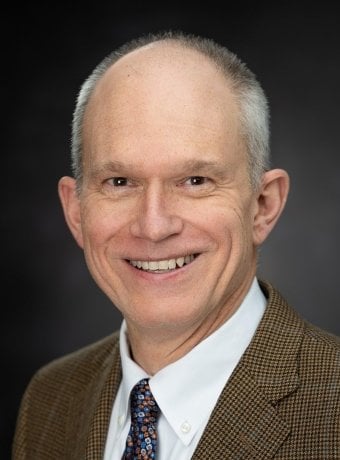Paul Juodawlkis

- BS Electrical Engineering 1986
Paul W. Juodawlkis has focused his career on the development of advanced technology for national security as research engineer, group leader, and technical advisor at the Massachusetts Institute of Technology (MIT) Lincoln Laboratory. He began his career at the Laboratory in 1988 as a hardware systems engineer on the team that developed the Airborne Seeker Test Bed (ASTB) platform, an airborne multi-sensor instrumentation system used to evaluate the survivability of U.S. air vehicles to missile attack and the effectiveness of electronic countermeasures. He flew 150 missions on the ASTB including a test campaign in support of Operation Desert Shield in 1991.
After completing his doctoral degree in 1999, Paul returned to the Laboratory to conduct applied research in the areas of photonic subsystems and compound-semiconductor optoelectronic components. He served as a leader of several groups: Electro-Optic Materials and Devices (2008-2014), Quantum Information and Integrated Nanosystems Group (2014-2020, 2022-2024), and Laser Technology and Applications (2021-2022), in which he worked to develop photonic integrated circuit (PIC) technology for application to quantum computing and sensing, optical communications, laser radar, inertial navigation, and microwave systems.
He then transitioned to the role of Principal Staff in the Advanced Technology Division (2024-present), where he is providing strategic guidance and technical expertise in the areas of program portfolio evolution, cross-cutting technology development, and partner relationships.
Paul has been elevated to the grade of fellow of both the Institute of Electrical
and Electronic Engineers (IEEE) and the Optical Society for his research contributions
to optical sampling techniques and to the development of the slab-coupled optical
waveguide amplifier (SCOWA). Optical sampling involves the transmission of periodic
trains of ultrashort (i.e., picosecond = 10–12 second duration) optical pulses through
an optical modulator to sample microwave signals with higher precision than can be
achieved via sample- and-hold techniques found in electronic analog-to-digital converters.
The SCOWA is a novel semiconductor optical gain medium having tenfold higher power
and lower noise than conventional optical gain media. The SCOWA concept has been used
to realize Watt-class optical power amplifiers, mode-locked lasers, and low-noise
single-frequency lasers, all having record performance. Recently, SCOWA technology
has been
transferred to industry to extend the range of laser-based remote-sensing systems
for mapping and quantifying the emission of methane, a significant greenhouse gas.
He has authored or coauthored over 150 peer-reviewed journal and conference publications in the photonics field.
Paul has been an active volunteer for several professional, academic, and community organizations. While an undergraduate at Michigan Tech, he was a member of the IEEE Eta Kappa Nu honor society, and he founded the iπ 3 R (I Pi-Cubed R) social organization and served as its president (1983-1986). He later served as a member of the External Advisory Committee for Michigan Tech’s Department of Electrical and Computer Engineering (2000-2015), during which time he supported the department’s effort to establish a photonics concentration in the undergraduate curriculum.
Paul has participated on a number of technical conference program committees, including serving as program co-chair (2010) and general co-chair (2012) of the Conference on Lasers and Electro-Optics (CLEO)—the premier international conference on laser science and photonics technology. He was an elected member of the IEEE Photonics Society Board of Governors (2011-2013), and served as vice president of membership (2014-2016) and is secretary-treasurer for the Society (2017-2019).
Paul received the Distinguished Service Award from the Photonics Society in 2017. He is also proud to have coached youth soccer for seven years in the Arlington Soccer Club.
Paul received a Bachelor of Science from Michigan Technological University in 1986, a Master of Science degree from Purdue University in 1988, and a PhD from the Georgia Institute of Technology in 1999, all in electrical engineering.
He grew up in Livonia, Michigan, and now resides in Arlington, Massachusetts, with his wife Amy, their cat Domo, and periodically with their son James during school breaks from UMass Amherst.
Updated March 2025